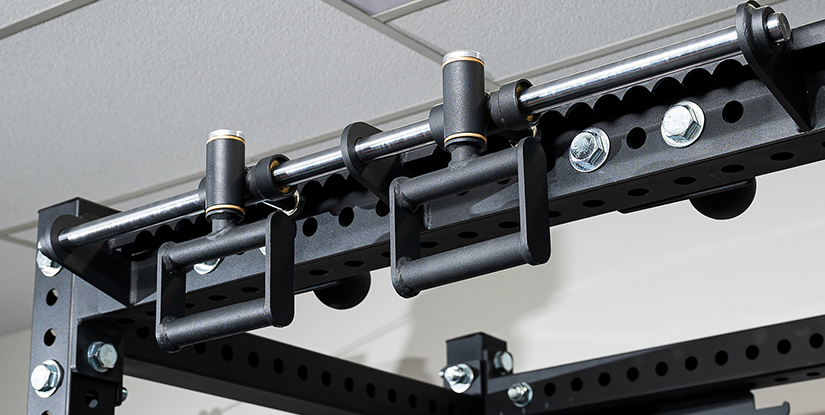Weight Training Accessories: Essential Gear for Strength, Safety, and Performance

Essential Weight Training Accessories for Performance and Safety
Selecting the right weight training accessories can meaningfully improve technique, protect joints, and extend the longevity of your training program. Whether you train at home or in a commercial gym, accessories are not mere extras — they are tools that enhance safety, comfort, and progressive overload. This guide outlines the most impactful accessories, how to choose them, and best practices for integration and maintenance.
Core Categories of Accessories
- Grips and Straps: Lifting straps, wrist straps, and grip pads help you maintain hold during heavy sets and reduce forearm fatigue.
- Supportive Gear: Weight belts, knee sleeves, wrist wraps, and elbow sleeves provide joint support during maximal or repetitive lifts.
- Footwear and Insoles: Flat-soled shoes for squats, specialized lifting shoes with elevated heels, and performance insoles improve force transfer and stability.
- Padding and Protection: Lifting belts, barbell pads, and bench press cushions increase comfort and protect soft tissue during high-volume work.
- Accessory Tools: Chalk, resistance bands, foam rollers, and mobility tools assist warm-up, technique, and recovery.
How to Choose the Right Accessories
Choose accessories based on training goals, frequency, and individual biomechanics. Prioritize items that address clear needs: if grip fails first, invest in straps or chalk; if lower-back pain occurs under load, consider a belt and technique coaching. Look for reputable brands, durable materials, and appropriate sizing. For supportive gear, select items with progressive compression levels and check return policies for fit.
Integrating Accessories into Your Program
Use accessories to complement, not replace, technique and strength work. For example, reserve heavy lifting straps for triple/AMRAP sets rather than every warm-up to ensure grip strength develops. Use a belt strategically for sets near maximal intensity while maintaining intra-abdominal pressure practice. Employ bands for mobility and activation in warm-ups, and foam rolling for post-session recovery.
Safety, Maintenance, and Longevity
Regular inspection and maintenance extend the useful life of your accessories. Clean neoprene and fabric sleeves after sweaty sessions to prevent odor and material breakdown. Check stitching and buckles on belts and straps for wear. Replace chalk or grip aids when residue affects handling. For high-impact items such as lifting shoes, monitor sole wear to avoid altered foot mechanics.
Budgeting and Value
Invest where it matters: a reliable pair of lifting shoes, a well-constructed belt, and quality straps deliver long-term value. For newcomers, a phased approach is efficient: start with chalk or straps and a basic belt, then add specialized shoes and knee sleeves as intensity increases. Avoid trendy items without proven ergonomic benefits.
Top Accessories to Consider
- Lifting Straps: Essential for heavy pulling movements and volume work.
- Weight Belt: Choose leather or nylon with firm support for near-maximal lifts.
- Wrist Wraps and Knee Sleeves: Support for pressing and squatting patterns.
- Lifting Shoes: Flat or heeled depending on squat mechanics and mobility.
- Resistance Bands: Versatile for warm-ups, assistance, and variable resistance.
- Chalk or Liquid Grip: Improve friction and reduce slip in heavy lifts.
- Foam Roller and Massage Tools: Aid recovery and maintain soft-tissue health.
Practical Buying Tips
Test fit whenever possible; shoes and sleeves must be snug but not constrictive. Read reviews focused on durability and real-world use. Consider warranties for higher-cost items. For home gym setups, prioritize compact, multipurpose accessories like bands and adjustable straps to maximize value per square foot.
Conclusion
Weight training accessories, when chosen and used intelligently, are investments in performance, safety, and consistency. Align purchases with concrete needs, emphasize quality and fit, and integrate tools into a program that still prioritizes progressive overload and sound technique. Proper maintenance and selective use will ensure accessories support long-term training goals.
FAQs
- Q: When should I use a lifting belt? A: Use for sets near maximal loads to stabilize the spine; not for all warm-ups.
- Q: Do wrist wraps weaken my wrists? A: No, when used selectively they protect joints without reducing strength adaptations.
- Q: Are lifting shoes necessary? A: They help with squat mechanics and ankle mobility but are not mandatory for all lifters.
- Q: How often should I replace knee sleeves? A: Replace when compression or fabric integrity declines, typically 6–18 months depending on use.
- Q: Should beginners buy all accessories at once? A: No, prioritize essentials and add items as training intensity increases.
- Q: Is chalk better than liquid grip? A: Chalk provides superior friction; liquid grip is convenient in gyms that restrict loose chalk.
- Q: Can straps fix weak technique? A: No, straps support grip but do not replace technical coaching or strength development.
- Q: How do I clean neoprene sleeves? A: Hand wash with mild soap and air dry to preserve elasticity and fit.
- Q: What is the best budget accessory? A: Resistance bands offer high utility for warm-up, mobility, and assistance at low cost.

